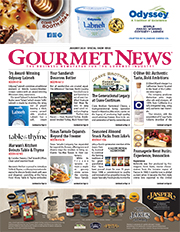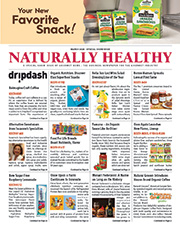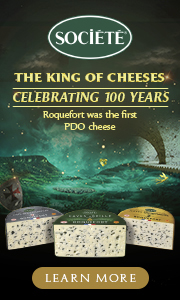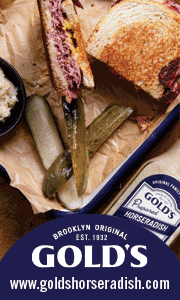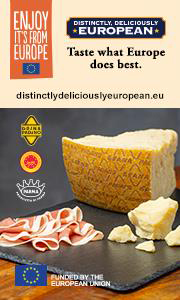Ferguson’s Minnesota Harvest Heralds Fall, Agritourism

Ferguson’s Minnesota Harvest award-winning farm opens for annual family fun, attracting locals and tourists with immersive agritourism fall festivities. (Photo: Business Wire)
Move over pumpkin spice lattes, the new unofficial start of fall begins with the opening of Ferguson’s Minnesota Harvest, an award-winning agritourism destination full of immersive autumn festivities for the whole family. Less than half an hour south of the Twin Cities, the family-owned farm opens its gates with the return of popular traditions including apple picking, a legendary Corn Maze, the thrilling Cow Train, and sensational new attractions such as the Cider Barn for adults, the Slippery Slope slides and an expanded Play Village for children.
“As a second-generation family-owned orchard we’ve been honored to be part of countless family stories, ingrained in the rich history of our orchard,” said Andy Ferguson, co-owner of Ferguson’s. “Whether it’s apple-picking, wagon rides, or simply savoring the simple joys of being together, we welcome all people to our family farm to experience the joy of the fall season one apple and one tradition at a time.”
Named the 2023 “Best Apple Orchard” in Minnesota, guests of Minnesota Harvest can enjoy family fun for only $15 per person, and children under 2 years old gain free admission. This one-time purchase includes a season pass allowing for unlimited daily entry from 10 a.m. to 6 p.m. throughout the season from Aug. 19 to Nov/ 5. Tickets for active-duty military, veterans, and seniors are $13 per person. Online ticket purchases are required to expedite entry, www.minnesotaharvest.net.
Embark on a flavorful adventure at the quaint Country Store. Savor freshly made caramel apples, irresistible pies and pastries, and the iconic apple cider donuts. The Country Store is home to Harvest Bistro, an all-new culinary experience offering an array of options including the famous Ferguson Mac & Cheese topped with pulled pork and apple slices, chicken salad sandwiches, 10-inch chili dogs, and more. A visit to the country store isn’t complete without shopping the wide selection of local gifts, crafts and products – and of course, apples!
As a leader in the national agritourism industry, Ferguson’s takes great pride in being a family-owned farm that helps locals and tourists alike learn about the origins of their food and how locally produced foods make it to their kitchen tables. Through immersive on-farm activities such as apple and pumpkin picking, or getting up close and personal with real farm animals including goats, sheep, pigs and chickens, visitors experience a slice of life that is growing less common in our non-stop, digital screen-filled day. Led by authenticity and integrity, Ferguson’s connects people with the land and provides visitors with a farm experience that becomes an annual tradition for the whole family.
Snapshot of Minnesota Harvest Attractions
- Apple Cannons (weekends only)
- Apple Picking
- Barnyard Basketball
- caBARNa Rentals – farm-themed cabanas for children’s parties
- Cider Barn – hard cider and beer bar for adults (weekends only)
- Corn Maze
- Corn Pit
- Cow Train
- Caramel Apple Shoppe – watch them being made!
- Duck Races
- Farm Animals
- Gem Mining
- Harvest Bistro
- Harvest Plaza – fall decor and live music
- Pedal Tractors
- Pumpkin Jumping Pads
- Pumpkin Patch
- Slippery Slope Dual 40’ Slides
- Spinning Apple Ride
- Straw Bale Pyramid
- Sunflower Stroll
- Vine Bar on the Patio
- Wagon Rides
For more news of interest to the produce industry and agritourism, subscribe to Gourmet News.
Spud Art: Try a New Easter Activity, Painting Easter Potatoes
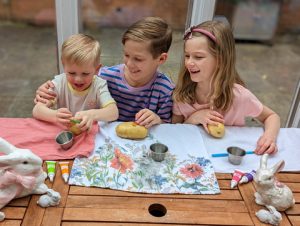 Families love their tried-and-true Easter traditions, but sometimes, you just need to scramble things up. This year, due in part to skyrocketing food prices, Potatoes USA reports that families are hopping on the newest trend and painting Easter potatoes.
Families love their tried-and-true Easter traditions, but sometimes, you just need to scramble things up. This year, due in part to skyrocketing food prices, Potatoes USA reports that families are hopping on the newest trend and painting Easter potatoes.
You heard that right: 2023 is the year of the Easter potato.
As it turns out, there are lots of upsides to brushing up on your spud art. In addition to being an affordable, nutritious pantry staple, potatoes are an excellent canvas for family activities.
“As a mom of two kids, I’m constantly looking for new activities. The idea of painting potatoes made me laugh, but honestly, it’s really fun,” said Marisa Stein, director of marketing at Potatoes USA. “My kids loved experimenting with different designs. It was silly and a great way to spend time with my family.”
Across the internet, families are giving their best tips for family-friendly crafting, featuring everyone’s favorite vegetable. Some use edible paint and water-based food coloring to dye their potatoes and eat them, too. Artists can give potatoes a food coloring bath for a lighter color or paint the food coloring directly on the spud for a vibrant alternative.
Other families are using traditional paint from their local craft store or dollar store to paint fun decorative potatoes to showcase their artistic accomplishments. Like with carving pumpkins at Halloween, the potato’s long shelf-life makes it an excellent opportunity to display fun showpieces in a friendly painting contest.
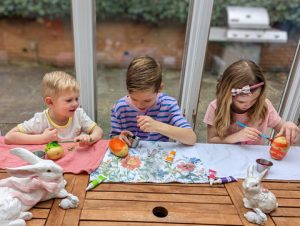 For the best results, here are a few tips for your Picasso potato:
For the best results, here are a few tips for your Picasso potato:
Cover your workspace with newspapers or plastic tablecloths so you can embrace the painting process without worrying about the cleanup.
Gloves are a great way to keep little hands clean from food dye or paint.
If you’re using food coloring, painting the food coloring on will result in the most vibrant color. If you don’t want the color to rub off, and you’re fine keeping the potatoes purely decorative, a coat of hairspray can seal the color and keep the dye from bleeding.
If you use regular paint, a white primer coat will make the colors pop!
Make sure the painted potatoes have fully dried before you move them.
For an extra activity, parents can cut the potatoes in half and carve them to make Easter stamps! Once the adults have carved the pattern, kids can paint the potato stamps and use their creations to make fun Easter-themed paintings on paper.
As an added bonus, potatoes are a great option for scavenger hunts in the backyard. The Easter Bunny doesn’t have to worry about hiding their spuds a little too well, since anything the tater hunters miss is biodegradable. (Just be sure to keep dogs away, as raw potatoes can make them sick.)
Parents are loving potatoes for their Easter activities this year due to their affordable price points and lack of prep work. Potatoes work best as an artistic medium in their natural state, so no boiling or set-up is needed to make them canvas ready. Plus, they’re tough against falls and drops for younger (and mess-prone) artists.
“I’m thrilled to see so many families hopping aboard this new trend,” said Bonnie Johnson, R.D., director of nutrition and industry relations, Potatoes USA. “As a dietitian, I love seeing families embrace vegetables in creative ways. Making potatoes a fun part of your holiday will help children learn to love the spud – and all its incredible nutritional benefits.”
In addition to their more creative side, potatoes also shine as a nutritious pantry staple. Research published in The Journal of the Academy of Nutrition and Dietetics found that potatoes have the highest score per dollar on eight important nutrients including potassium, fiber, protein, vitamins C and E, calcium, iron and magnesium. Potatoes also have a longer shelf life than many fresh vegetables.
Be sure to visit PotatoGoodness.com to learn more about the many health benefits of potatoes and find some delicious spring recipes.
If your Easter bunny hops on the #easterpotatoes trend this year, send us your photos! Tag @PotatoGoodness on Facebook or Instagram.
For more trends in food and beverage, subscribe to Gourmet News.
USDA Invites Producers, Stakeholders to Urban Agriculture Meeting
 The U.S. Department of Agriculture encourages urban producers, innovative producers and other stakeholders to virtually attend the fourth public meeting of the Federal Advisory Committee for Urban Agriculture and Innovative Production on Feb. 23.
The U.S. Department of Agriculture encourages urban producers, innovative producers and other stakeholders to virtually attend the fourth public meeting of the Federal Advisory Committee for Urban Agriculture and Innovative Production on Feb. 23.
“Since last year, the Federal Advisory Committee has been a source of valuable, on the ground information and recommendations for USDA,” said Terry Cosby, chief of USDA’s Natural Resources Conservation Service, which houses USDA’s Office of Urban Agriculture and Innovative Production. “This meeting will help us better serve urban and innovative producers and their communities.”
The Committee is part of USDA’s efforts to support urban agriculture and innovative agriculture, creating a network for feedback. Members include agricultural producers and representatives from the areas of higher education or extension programs, non-profits, business and economic development, supply chains and financing. Three public meetings of the Committee were held in 2022.
Topics include:
- Addressing previous public comments.
- Subcommittee and committee deliberations.
- Public forum.
The meeting will be held from 3:30-6 p.m. ET on Feb. 23. To attend virtually, register by Feb. 23 on the Committee’s webpage.
Written comments for the urban agriculture meeting must be submitted by 11:59 p.m. ET on March 9 through the Federal eRulemaking Portal. Docket #2022-24020.
For special accommodations, contact Markus Holliday at UrbanAgricultureFederalAdvisoryCommittee@usda.gov. \
USDA will share the agenda between 24 to 48 hours prior to the meeting on https://www.usda.gov/partnerships/federal-advisory-committee-urban-ag. Additionally, other resources include the Federal Register notice and the Committee’s webpage.
For news of interest to the specialty food industry, subscribe to Gourmet News.

